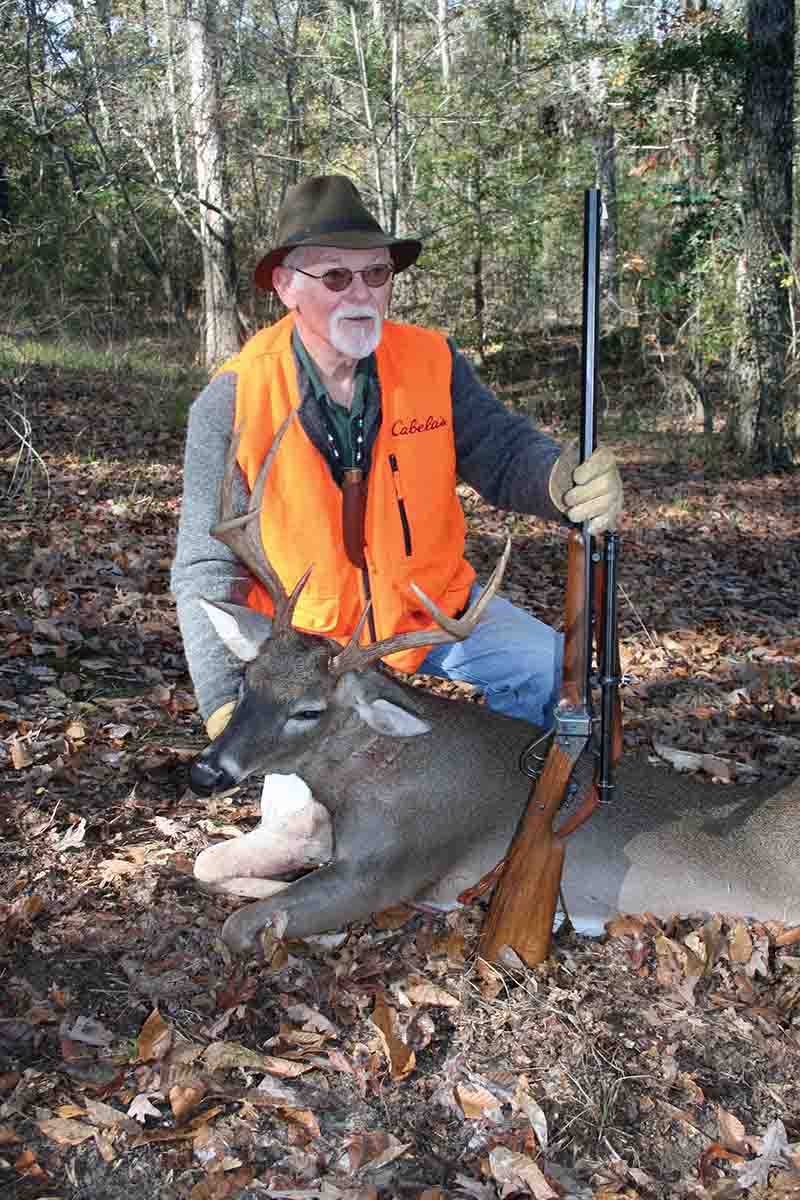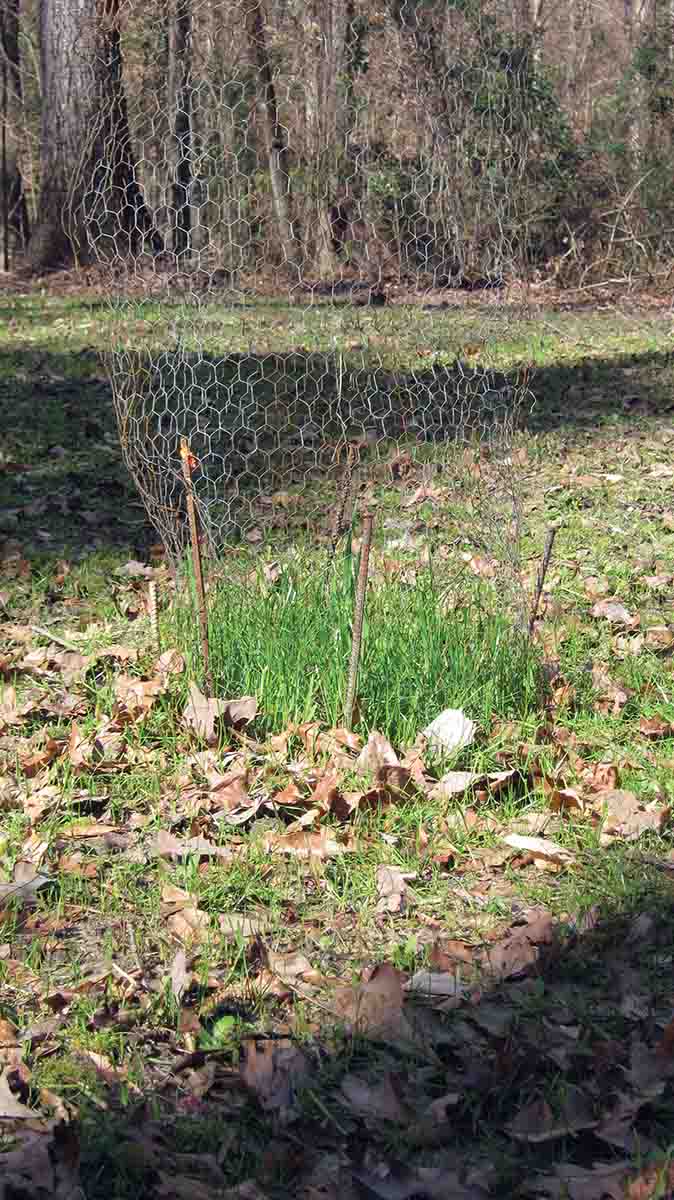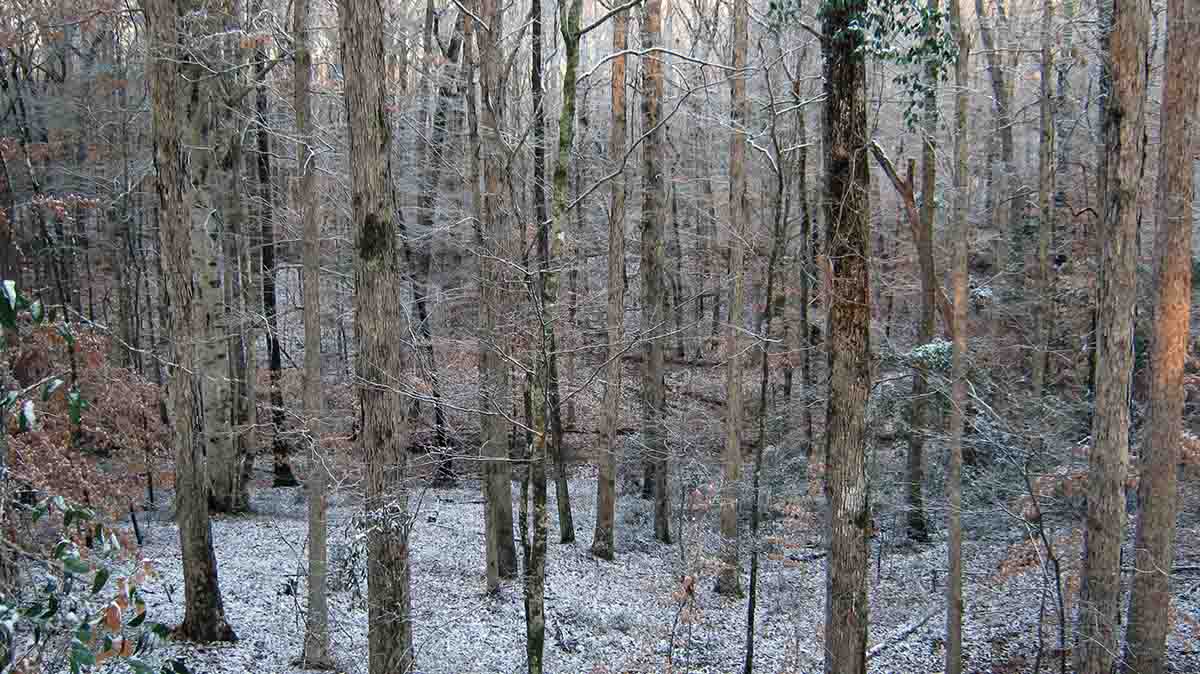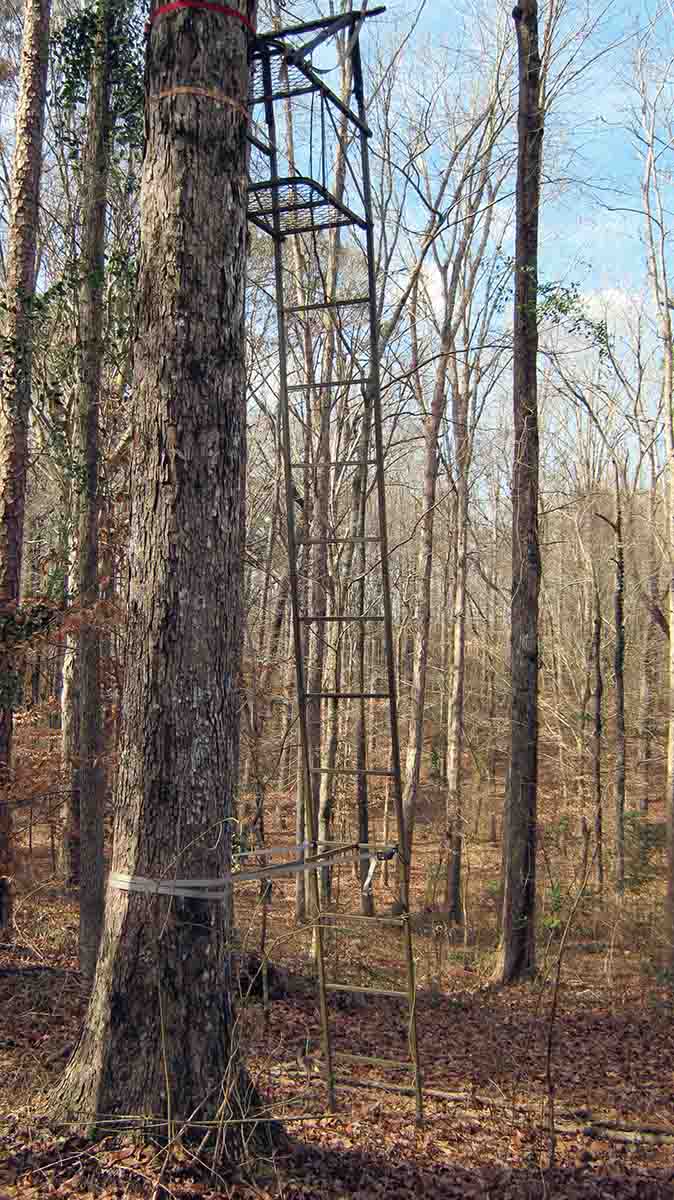Deer on the Patio
Adaptable Whitetails
feature By: Tony Kinton | May, 20

But what of the more common local hunt? After all, these are likely the ones we most regularly encounter. These outings are so common that they may go overlooked and underappreciated, supplanted by some erroneous thinking that concludes we must travel far to succeed. Permit me to say that I in no way am discounting the broadening of horizons. As much as anyone, I am guilty of seeking out the new. Western states (I am from the Southeast), Canadian provinces, Africa…I have hunted them and will continue to do so. But I, as well as the great percentage of hunters, have a plethora of wealth at my backdoor. Consider the ubiquitous whitetail deer.
There can be little argument that whitetails now hold the number one slot in popularity among big-game animals across the U.S. and portions of Canada. This does not diminish the value of other grand creatures such as elk, moose, sheep and bears. It simply underlines the point that whitetails are at the top. The reasons for this are varied, but two that stand out are distribution and population. These two can justifiably be summed up with the descriptive word adaptable. Whitetails adapt, prompting both distribution and population growth. This has led in many places to a situation that can appropriately be designated “patio deer.”

Some 30 years back, my wife and I opted to remove ourselves from city noise and traffic. We purchased 12-acres of land and built a house containing two small offices just down the road from where I grew up. She settled into her one-person CPA business; I jumped even deeper into writing. I grew up hunting the area from childhood to college, but there were no deer in the neighborhood during those years. But things were changing.
As time progressed, I became increasingly aware of deer inhabiting that same country I trod with regularity in my adolescence, while searching for quail and squirrels. Not enough to prompt a hunt, but deer were obviously present. Neighbors had noticed the same. A track or two here and there, a deer bouncing across a field or county road. No question, deer were occupying an area in which they were not long ago unknown. Talk turned to hunting, and acquaintances of the community shared my enthusiasm that one day we might actually hunt deer, right here at home. That hope materialized.
But where? That was the question most troubling me. I had only 12-acres of land. Those acres, however, were prime for deer. A cutover or two were scattered about on neighboring properties, providing ample bedding habitat. My acres were covered with hardwoods that produced an abundance of acorns annually. But perhaps the most important aspect of all was that deer of the area received little, if any, pressure. The stage was gradually being set for some patio deer hunting, this to be conducted and managed with respect for the deer and adjacent landowners. I set about to make my tiny holding as productive as I could in anticipation of this much-desired opportunity.
The beginning of property enhancement was a complete survey of the area. While not a tremendous chore, it was something that needed to be done. I wanted to know every inch of my land as well as the makeup of surrounding properties. Walking those I had access to and employing aerial photos and topo maps of those I did not, I learned the contours, ditches, timber stands, open fields and pastures of the area. This gave me a viable idea of where deer might come from and go to in relationship to my own holding. Fortunately, I had those oaks – perhaps eight of the 12-acres acres are covered with them.
These factors determined, I realized that for a rather short but productive time each year, my acreage needed little enhancement. Yes, there were things I could do, but acorns falling from those oaks were sure to bring deer there frequently in the fall, even into early deer season. But what else could be done? One possible idea was a food plot; I would try it.
I had cut firewood in the form of less desirable mast producers from the northwest corner of my property a year or so back, so I prepared a tiny plot there; this was no more than one-eighth acre. And while I did see a few deer there in the two years I maintained that plot, it proved too small and too difficult to access minus walking east to west through the entire property. I elected to change locations, and that change came through the assistance of nature; specifically, Hurricane Katrina. She obliged by uprooting six big white oaks on a hill no more than 100 yards from the back of my house. This would be the new plot. I allowed the first to grow up in tangles and left it as a miniature pocket of quiet security. Katrina’s carnage became a huge supply of firewood and perhaps a half-acre food plot. It showed promise that first year.
One plus to that plot is that I could get to its edge with very little noise. I set a ladder stand near it, between my back lawn and the plot. That stand also allowed a visual of oaks drifting down the hill from there to a small stream that held water except late in excessively dry summers. I had my plot and stand site. Oaks would do the rest.

If memory serves properly, the day was Monday; deer season had opened the previous Saturday. It was mid-November. I left my desk about 3:30 P.M., grabbed my C. Sharps 1874, a belt filled with black-powder cartridges that held 68 grains of Goex FFg and Lyman #457122 bullets lubed with SPG and headed to that ladder stand. Other than a brief crunching of autumn-dried leaves, my approach was near noiseless. I settled in, hoping that my first buck in an area that grasped my own roots tightly would show with ample daylight remaining. And it did!
Not more than 30 minutes after getting situated, I heard that familiar crunching in leaves of an approaching whitetail to my left and soon the unmistakable pop of a deer eating acorns. The food plot was 20 yards to my right. A small buck came first, eating acorns as he passed, his eyes snatching curious and regular glances at the plot. He was clearly headed there. Then a second buck, this one not huge, but mature and grand, glistening in a late-day sun. I would take him if the shot was presented.
Four more steps put that second buck behind an oak; the smaller of the two eased into the plot. With the Sharps set on the projected path, I watched the buck shift and move slightly and then step over a small log. He was 60 yards and broadside and properly postured. The Sharps rumbled; the buck sank. I eased down the ladder and went to the buck, my entire being in a dreamy fog of exhilaration and gratitude. I guess you could say I had waited 40 years for this deer. My old childhood haunts had produced more than I ever expected. And they have done so several times since.
Perhaps similar happenings are now common to many readers of this publication. If so, celebrate and care for them. If not, the possibility may be there to develop tiny holdings and bring about desired change. But, there are logical parameters to be considered. Not every inch of residential ground can be transformed into viable deer-hunting locales, and not every backyard will hold whitetails. Begin making decisions based on what is at your disposal. Natural surroundings are the major ingredient.

Deer require cover and sustenance. These are good starting points for one wishing to enhance small properties. Cover can take many forms, but natural tangles and/or new-growth timber, at least here in my area, are among the top contenders for preferred cover. Depending on property size, a landowner may be able to establish each on his property. If not, he must rely on functioning cover being nearby.
I am fortunate to join other blocks of small holdings that receive timber harvests on rotation. Those cutovers, even though only a few acres in spots, quickly grow into perfect cover and remain as such for perhaps a decade. If basic cover is not available to a landowner, he will not likely enjoy pronounced success in management efforts.
Deer are browsers and utilize an extraordinarily wide assortment of natural foods to supply their basic needs. Those oaks on my place do a great deal of that food supplying in the fall. But even if primary foods are not immediately available to a property owner, this is one area where intervention can work wonders. Soft, and hard-mast trees can be planted. This is a long-term affair, but it will pay dividends.
Other natural foods such as honeysuckle and green briar can be enhanced by fertilization. If feasible, fire can be a small landowner’s strongest ally. Controlled burns, which won’t harm mature mast trees, will open the forest floor to an exploding array of new growth. This growth will be rich with browse. Something similar can be said for disturbing the soil by disking underneath and along the borders of timber stands. Such action prompts the emergence of plant life that has lain dormant under leaves and other forest litter. All these efforts can encourage whitetails to visit a given property.
Then there are food plots. Even small openings can be put to use for this practice, and plots can be extremely important to the overall picture. Consider the site and availability of sunlight, then select the seed best suited. Do a soil test, follow those guidelines judiciously and a productive food plot will likely be the result.
While I don’t have a long list of carefully-prepared and fully-substantiated scientific findings to verify my conclusion, I make the following bold statement based on years of observation: The actual hunting of tiny properties is a peculiar entity! The deer on or near my 12 acres of land see and smell and hear me daily. I mow the lawn that falls within 75 yards of a food plot. I hammer, build and weed-whack around outbuildings. I chainsaw diseased trees and cut firewood and drag brushy debris from trails and ditches and bang around with the tractor all over the place. Deer don’t seem to mind.
But then comes the hunting. I am always amazed how deer come to recognize variables in my behavior. All those chores of everyday life bring interaction with deer, but other than scurrying off around a hill or down a ditch, they show little alarm. However, once I begin sitting in a stand or crouching behind a tangle at the base of a tree, Sharps in hand, they change. They show increased stealth and aversion. They abandon their lawn-ornament demeanor and become fully aware whitetails. Bump one or two while exiting a stand site at dusk, and the entire collection suddenly becomes what they truly are – deer. Cunning, resourceful, masters of secrecy.
They may relocate to quieter environs across the fence where I have no access. Or, and this is far more common, they become creatures of the darkness. This can and often does spell the end of hunting. Trail cameras reveal the truth. They eat the food plot, and they nibble on acorns. But they do so at night. Such tactics by deer are not restricted to small acreage, but they do spell doom for one who has only that small acreage to hunt.
Is there an answer? Not entirely. Spook them; they go nocturnal. The only solution, and one that works quite frequently, is to do recognizance via binocular and/or trail camera. Determine, using these tools, the avenues where and the time when the deer you want to hunt are active. And make the strongest effort possible to collect that deer on the first try. Too much scrambling about, in the posture of a hunter, can spoil the season on these small hunting areas.
Deer in the backyard are an intriguing proposition. And there is much enjoyment in taking charge of making a property all it can be. It is worth every minute demanded and adds immeasurably to the hunting experience, even if that hunting is done just outside the house. There is something intrinsically captivating about this business of “patio deer.”


